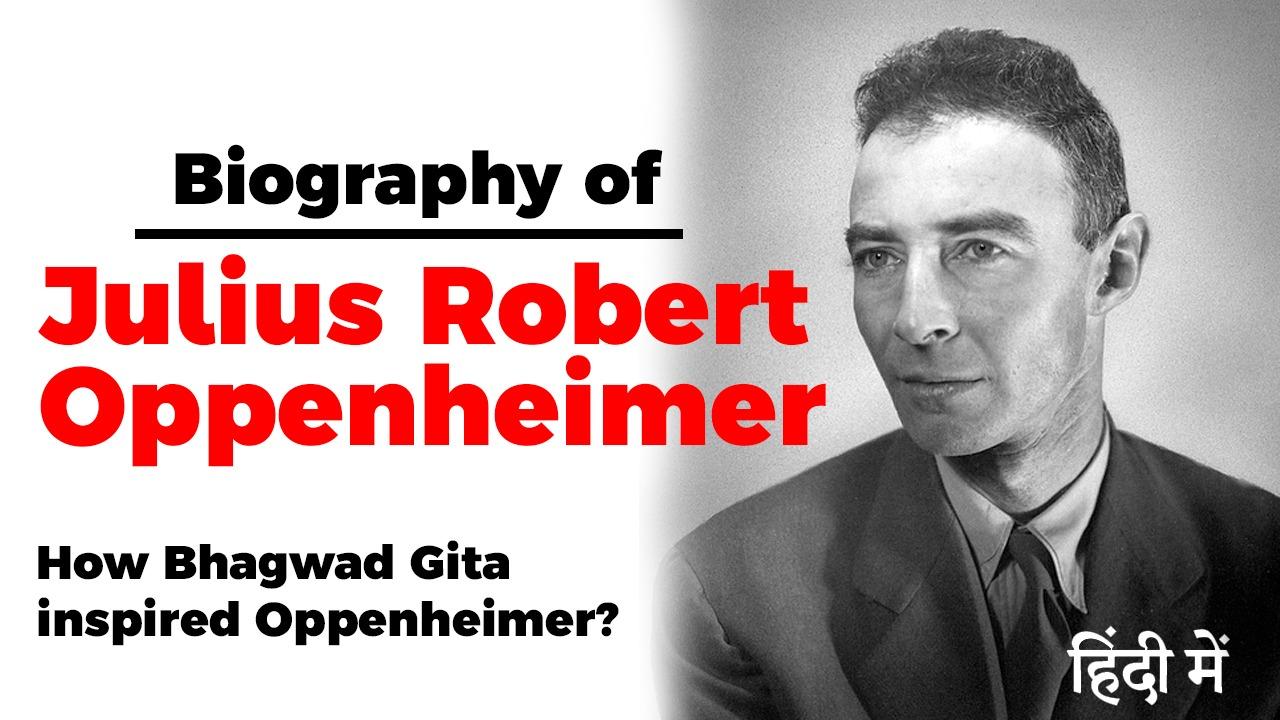Table of Contents
EARLY LIFE
- Oppenheimer was born in New York City on April 22, 1904,to Julius Oppenheimer, a wealthy Jewish textile importer who had immigrated to the United States from Germany in 1888, and Ella Friedman, a painter. JRobert had a younger brother, Frank, who also became a physicist.
- Oppenheimer was initially educated at Alcuin Preparatory School; in 1911, he entered the Ethical Culture Society School. He entered Harvard College one year after graduation, at age 18.
- Oppenheimer majored in chemistry, but Harvard required science students to also study history, literature, and philosophy or mathematics.
EDUATION
- He was attracted to experimental physics by a course on thermodynamics He graduated summa cum laude in three years.
- In 1924, Oppenheimer was informed that he had been accepted into Christ’s College, Cambridge. He wrote to Ernest Rutherford requesting permission to work at the Cavendish Laboratory.
- He was ultimately accepted by J. J. Thomson on condition that he complete a basic laboratory course..Throughout his life, Oppenheimer was plagued by periods of depression, and he once told his brother, “I need physics more than friends”.
EDUCATION
- In 1926, Oppenheimer left Cambridge for the University of Göttingen to study under Max Born. He obtained his Doctor of Philosophy degree in March 1927 at age 23, supervised by Born.
- Oppenheimer published more than a dozen papers at Göttingen, including many important contributions to the new field of quantum mechanics.
- He and Born published a famous paper on the Born– Oppenheimer approximation, which separates nuclear motion from electronic motion in the mathematical treatment of molecules.
WORKS
- Oppenheimer was awarded a United States National Research Council fellowship to the California Institute of Technology (Caltech) in September 1927.
- From Leiden he continued on to the Swiss Federal Institute of Technology (ETH) in Zurich to work with Wolfgang Pauli on quantum mechanics and the continuous spectrum.
- Oppenheimer did important research in theoretical astronomy (especially as related to general relativity and nuclear theory), nuclear physics, spectroscopy, and quantum field theory, including its extension into quantum electrodynamics.
WORKS
- Oppenheimer published only five scientific papers, one of which was in biophysics, after World War II, and none after 1950.
- In 1933, he learned Sanskrit and met the Indologist Arthur W. Ryder at Berkeley. He read the Bhagavad Gita in the original Sanskrit, and later he cited it as one of the books that most shaped his philosophy of life.
- Oppenheimer was overeducated in those fields, which lie outside the scientific tradition, such as his interest in religion, in the Hindu religion in particular, which resulted in a feeling of mystery of the universe that surrounded him like a fog.
- Oppenheimer was nominated for the Nobel Prize for physics three times, in 1945, 1951 and 1967, but never won.
MANHATTAN PROJECT
- On October 9, 1941, two months before the United States entered World War II, President Franklin D. Roosevelt approved a crash program to develop an atomic bomb
- In June 1942, the US Army established the Manhattan Project to handle its part in the atom bomb project selected Oppenheimer to head the project’s secret weapons laboratory.
- Scouting for a site in late 1942, Oppenheimer was drawn to New Mexico, not far from his ranch. The Los Alamos Laboratory was built on the site of the school, taking over some of its buildings, while many new buildings were erected in great haste.
PROJECT TRINITY
- It soon turned out that Oppenheimer had hugely underestimated the magnitude of the project; Los Alamos grew from a few hundred people in 1943 to over 6,000 in 1945.
- The joint work of the scientists at Los Alamos resulted in the world’s first nuclear explosion, near Alamogordo, New Mexico on July 16, 1945.
- I remembered the line from the Hindu scripture, the Bhagavad Gita; Vishnu is trying to persuade the Prince that he should do his duty and, to impress him, takes on his multi-armed form and says, ‘Now I am become Death, the destroyer of worlds.’ I suppose we all thought that, one way or another.
POSTWAR
- He became a household name and his portrait appeared on the covers of Life and Time
- In November 1945, Oppenheimer left Los Alamos to return to Caltech, but he soon found that his heart was no longer in teaching In 1947, he accepted an offer from Lewis Strauss to take up the directorship of the Institute for Advanced Study in Princeton, New Jersey.
- During a series of conferences in New York from 1947 through 1949, physicists switched back from war work to theoretical issues.
- Under Oppenheimer’s direction, physicists tackled the greatest outstanding problem of the pre-war years.
POSTWAR
- After the Atomic Energy Commission (AEC) came into being in 1947 as a civilian agency in control of nuclear research and weapons issues, Oppenheimer was appointed as the Chairman of its General Advisory Committee (GAC).
- The FBI under J. Edgar Hoover had been following Oppenheimer since before the war, when he showed Communist sympathies.
- Oppenheimer had found himself in the middle of more than one controversy and power struggle in the years from 1949 to 1953.
DEATH
- Oppenheimer was a chain smoker who was diagnosed with throat cancer in late 1965.
- After inconclusive surgery, he underwent unsuccessful radiation treatment and chemotherapy late in 1966.
- He fell into a coma on February 15, 1967, and died at his home in Princeton, New Jersey, on February 18, aged 62.






















 WhatsApp
WhatsApp